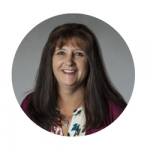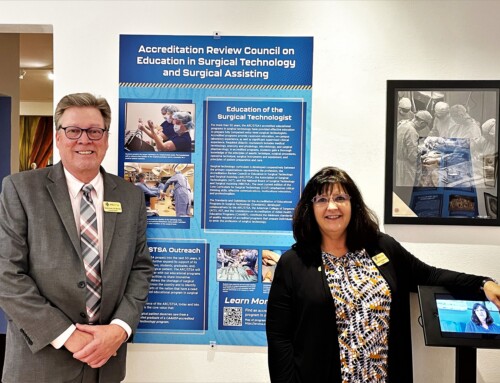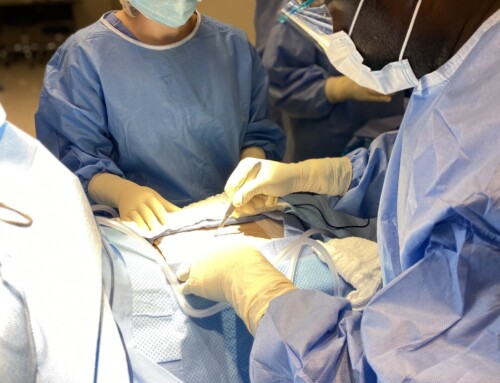Featuring Janice Grewatz, BS, CSFA, CST, CSPDT, FAST, and Libby McRae, AS, CST, FAST
ARC/STSA was proud to partner with AST on the development of the “Core Curriculum for Surgical Technology, Seventh Edition” (CCST-7e), set to be released later this fall! This latest edition was reviewed and revised by a panel of educators representing the two organizations with participation from the NBSTSA. The educators contributed their time and expertise for more than two years to help further clarify content and set programs up for success.
We spoke with revision panel member Janice Grewatz and panel chair Libby McRae about the process, the impact that the 2018 Summit on Surgical Technology Education for the 21st Century had on shaping content and what educators can expect from this new edition.
Tell us about the process of reviewing the seventh edition. What role did you play? How did educators on the panel and the partner organizations collaborate to achieve the end product?
Janice Grewatz (JG): The process of creating the CCST-7e was an experience that began more than two years ago and was a labor of love for all the participants. We began by creating a statement of purpose with specific supporting goals. Topics in the Core Curriculum were assigned to working groups to revise content as needed and then present the new revisions to the entire panel for approval or further consideration.
Throughout the process, we always kept in mind our purpose and goals, as well as the content, scope and sequence of the information that would be included. I was one of five ARC/STSA representatives, and all organizations worked collaboratively to make sure the end product is representative of what the future vision of the surgical technology profession will be, and that it includes the education necessary to prepare students for that future.
Libby McRae (LM): At the time the CCST-7e began revision, I was the chair of the Education and Professional Standards Committee (ESPC) for the Association of Surgical Technologists (AST). In this role, it was my duty to coordinate and chair the revision panel for the CCST-7e. It was my honor to help select members of the EPSC to participate on this project.
Along with staff liaisons from AST and the ARC/STSA, I began to map out a timeline for completion, as well as a structure for the work to be done and meetings to take place. I had the opportunity to lead the panel members through our process, as well as help provide a sense of vision and purpose.
I cannot commend the panel members enough for their tireless efforts and ability to utilize their expertise in their organizations and backgrounds to produce a great piece of work.
How did the goals coming out of the 2018 Summit on Surgical Technology Education for the 21st Century shape the work of the Core Curriculum panel?
JG: The goals of the Summit on Surgical Technology Education were always kept in mind when revising the CCST-7e. Much information and direction of the future of the profession came out of that summit. One of the objectives was to increase the depth of content within the didactic curriculum in the areas of robotics, minimally invasive surgery, image guided systems and endovascular surgery. The panel made sure to include those components in the revision document. Additionally, while we did not provide a list of required equipment, instruments and supplies that a program must possess, lab skills were incorporated into a required component of the core curriculum along with didactic content and clinical case requirements. Having these required lab skills included ultimately illustrates the equipment, instruments and supplies a program must have to be able to teach those skills.
LM: From the first meeting to reviewing the final product, the goals and recommendations from the summit were discussed, thoughtfully considered and woven in the fabric of our work. The input from the educators who attended the summit was extremely valuable and helped us focus on the revision. We had at our fingertips the feedback we needed to provide educators with what they were asking for.
All goals were discussed at length and evaluated to see how and where they might best fit within the curriculum. If the goal fit the CCST-7e as a framework for entry-level education, and best represented the current and future field of surgical technology, it was included.
We understand there was a lot of reorganization done in seventh edition to better help with clarifying content. In what ways do you foresee these changes being beneficial to surgical technology educators?
JG: The revision will further clarify content that may have been confusing and will also assist new educators in understanding what needs to be taught. We tried to remove any ambiguity and make information clear, concise and sequenced in a way that can serve as a roadmap for educators. Additional examples in the appendices, as well as helpful information on developing curriculum, are provided to assist new educators as they transition from practitioner to educator.
LM: The CCST-7e will look different to educators. With so many amazing content experts on the panel, we really discussed how we wanted this edition to represent the process of education as well as the flow in which content could best be represented. We believe that the reorganization will help new educators, as well as experienced educators, organize their curriculum for the better of their students. Content is laid out in such a way that an educator can easily follow along and see the framework fitting into their program.
Enhancement in some areas and paring down in others, with important reference to the needs of the profession, job task analysis results from the NBSTSA and amazing insight from the panel members, will all help to better support educators across the nation.
Is there anything else you’d like to share?
JG: It was an honor and a privilege to work with all the members of the panel, and I am very proud of all that we have accomplished.
LM: I am extremely humbled to have had the opportunity to work on such a great project. This was a huge undertaking. As an educator myself, it was a daunting task to both imagine what the end result should be and also imagine how to incorporate it into my own program.
Programs will have two years to incorporate the revised curriculum after the CCST-7e is released. Watch for additional instructions from the ARC/STSA regarding the implementation process later this fall.


Janice Grewatz, BS, CSFA, CST, CSPDT, FAST, (left), is the surgical technology program director at Parkland College in Champaign, Illinois. She also serves as the president of the ARC/STSA Board of Directors.
Libby McRae, AS, CST, FAST, (right), currently serves as a director on the Board of Directors for the National Board of Surgical Technology and Surgical Assisting. She has invested herself in the surgical technology profession in as many ways as possible, from 91D10 school in the Army (operating room technician) in 1991-1992, to teaching for the past 16 years and serving on the AST’s Education and Professional Standards Committee.



